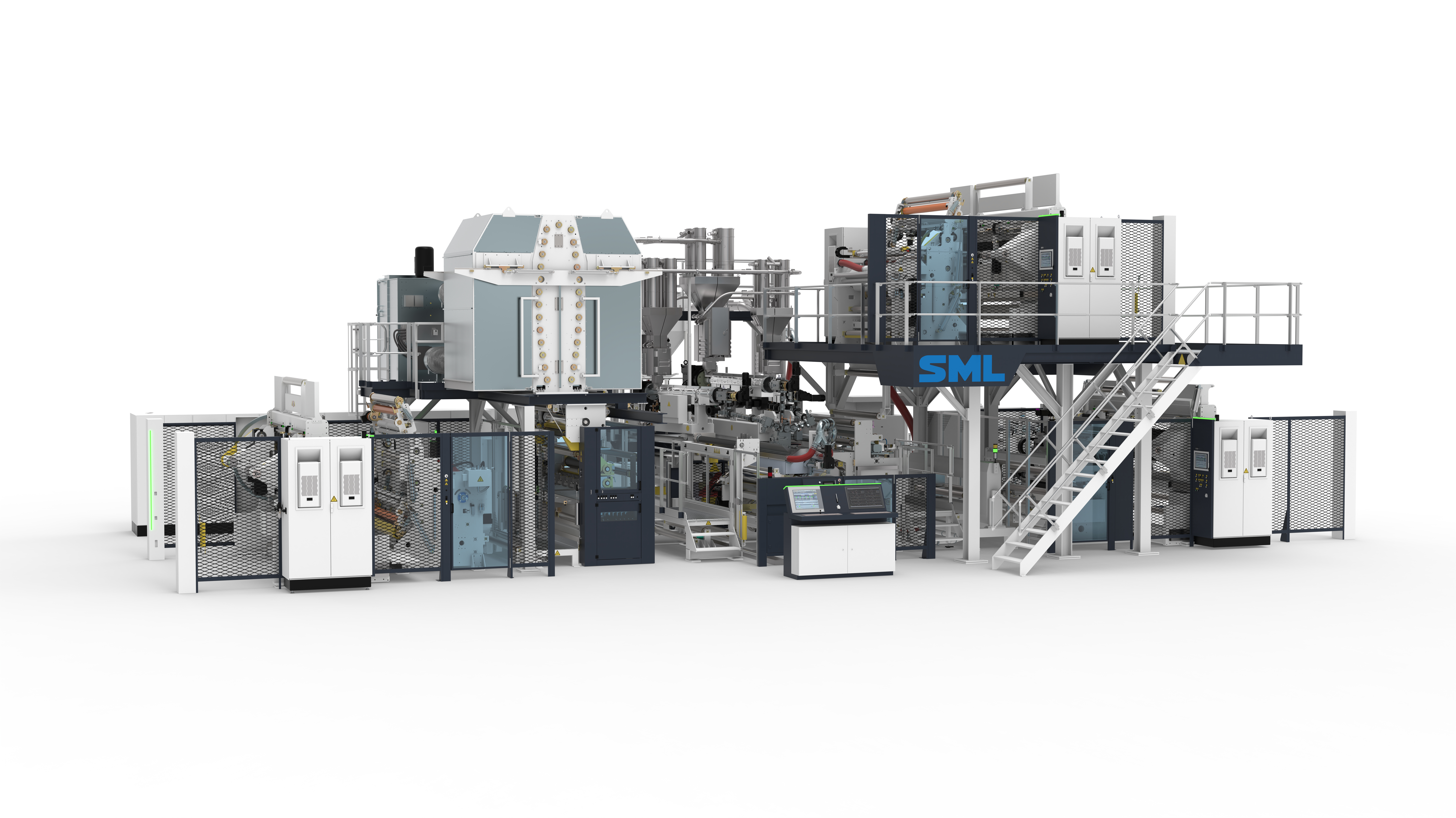Breadcrumb
FlexPack: the multiple advantages of extrusion coating and lamination
SML’s market-proven FlexPack series was specifically designed for the flexible packaging market. Rising interest in recyclable mono-material structures containing MDO-PE or MDO-PP film is bringing the advantages of “classic” coating and laminating processes into focus.
SML’s FlexPack lines are versatile. They are therefore perfectly suited to the requirements of the highly dynamic, flexible packaging market. The product range extends from various types of laminates and composite structures to innovative mono-material structures made of MDO-PE. The extrusion coating and lamination process boasts a wealth of tangible assets:
Fast and resource-efficient
Unlike other coating and lamination processes, extrusion does not require time-consuming curing steps, which is particularly advantageous for large-scale productions. Once the extruded melt curtain has been applied and cooled, the products are ready for further processing.
The careful control of the thickness of the coating layer influences the mechanical properties and often saves on material, weight and costs.
One of the most important environmental benefits of mono-material extrusion coating and lamination is that no solvent adhesives are required for the adhesion between the substrates. This makes the entire process more environmentally friendly and has an overall positive impact on the production of sustainable and recyclable packaging.
Bonding as a functional layer
Thanks to the variety of raw materials and their specific properties, a particularly strong adhesion can be attained among different substrates. The centre layer between the substrates may serve not only as a bonding, but also as a functional layer, which can significantly improve the barrier properties of the whole structure. This enables the use of more cost-effective substrates with minor functionalities, e.g. blown films. In certain applications, a second substrate can even become obsolete. Besides saving on materials, this also reduces the need for machine capacity and logistics costs.
“We have continuously developed and optimised our FlexPack series on the basis of decades of experience and numerous completed projects. Our overriding aim is to provide sustainable, energy-efficient and customer-oriented machine solutions”, Mayrhofer concludes.
Redlham, 04.09.2025
